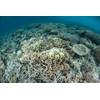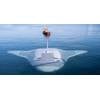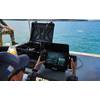Genetic Yacht Lab Maps Sea Life Looking for Cures
A team of scientists has begun collecting the genomes of sea creatures off the Florida coast in the hopes that unmapped species, some of which have the capacity to reverse disease and injury in themselves, may hold the key to new treatments for humans.
Of about 250,000 marine species identified so far, scientists have sequenced the genetic material of only about three dozen, according to University of Florida neuroscientist Leonid Moroz.
To speed up the process of making potential new discoveries, a team led by Moroz used a yacht loaded with a fully equipped genomic laboratory to do the sequencing on the ocean in real time.
The scientists sequenced 22 organisms during two test runs off Florida's Atlantic coast near the Bahamas over two weeks ending in early April, Moroz said.
"If we could get a fleet of ships doing this, we could double our knowledge of the ocean in a year or two," Moroz said.
Moroz specializes in comb jellies which he said are able to heal wounds in two to three hours and regenerate their brains in three to five days.
Before the shipboard lab, fragile organisms plucked from the ocean often arrived dead or degraded at land-based laboratories. One specimen tested on the ship was so delicate Moroz said he had to scoop it in a plastic bag.
Moroz said he used a personal genome machine system linked via satellite to a University of Florida supercomputer to get results overnight.
U.F. alumnus and engineer Steven Sablotsky of Miami donated the use of his 141-foot specially equipped yacht, Copasetic, for two trial runs, also supported by NASA, the National Institutes of Health, the National Science Foundation, and the Florida Biodiversity Institute located in the Florida keys.
Moroz also teamed with Gustav Paulay, the leading expert in tropical biodiversity and a curator of the Florida Museum of Natural History, who joined the trips.
Nearly half of the drugs in use today are derived from nature but Moroz sees the work as a race against time as the planet loses a species to extinction every six hours. Given that the oceans make up 70 percent of the Earth's surface, Moroz said scientists estimate the ocean could yield 14 to 20 million new compounds.
"We not only need to do it in principle, we need to do it fast," he said.
(By Barbara Liston; Editing by David Adams and James Dalgleish)















 February 2024
February 2024



